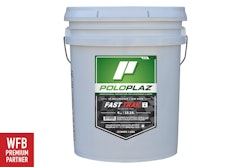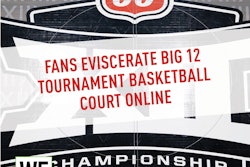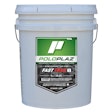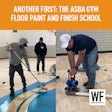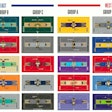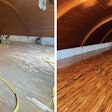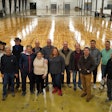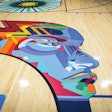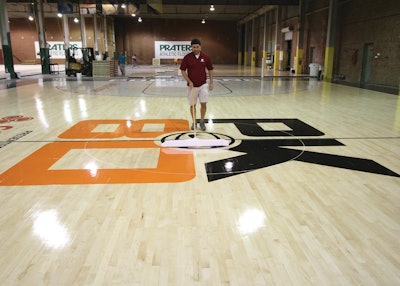
There was a lot of attention in the media late last fall about a few NBA players slipping on the In-Season Tournament courts that were being used for the first time. There was no reason for those newly coated courts to be slippery, as they were coated with the same MFMA-approved finishes that all the other NBA courts have—finishes tested to have the correct coefficient of friction. I think because the courts were completely painted and looked so different from any other courts the NBA had used, people were perceiving them to be different. Of course, there are things that can make a basketball court slippery. Those things are:
1) Lack of maintenance
If there is dirt on the floor, it will be slippery. This can be dust or what I call “organic soil,” meaning sweat, grease, oil—things that end up on the floor from people using the courts. In particular, a lot of older gyms have doors that have direct access to the outside, and those doors tend to get left open, allowing a lot of dust onto the courts. Also, dust left under bleachers, in expansion gaps or along the edges of portable court panels will find its way onto the playing surface. If there isn’t a good maintenance program for a court, it will get slippery. Floors should be dust-mopped and also tacked with the cleaner recommended by the finish manufacturer, particularly right before a game.
2) Mechanical systems not maintaining the correct RH
There can be times when the HVAC system in a gym or facility is not maintaining the correct relative humidity in a facility, and moisture on the court can cause it to be slippery. In our area here in Chattanooga, Tenn., we find that the seasonal change from summer to fall tends to be a time where the mechanical systems in the buildings are not handling the built-up humidity in the building correctly, and courts can get slick from moisture on the court. There have been instances of NBA games delayed or canceled because of this issue.
3) Worn finish
If it’s been too long between recoats and/or there has been little cleaning of the court, the finish can literally get worn down to the point where it has lost its structure that has the correct coefficient of friction. If I walk into a gym and I see that the lanes look dull compared with the rest of the court, I know that they aren’t dust-mopping that court and the players are wearing off the finish with their shoes.
What doesn’t cause slippery floors
There isn’t one type of finish that is more slippery than another one—they are all tested to have the correct friction for safe play on the court.
RELATED: How They Do It: Pulling Off Today’s Bold Basketball Floors















